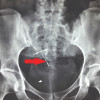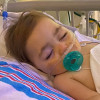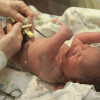
 IJCP Editorial Team
IJCP Editorial Team
Consensus on patient cases for hospitalized children with a high pediatric track and trigger tool score without any mounting concern
Pediatric track and trigger tools (PTTTs) based on vital parameters witness their global use in assisting healthcare professionals in identifying signs of critical illness and incipient deterioration in hospitalized children. Studies indicate that nurses do not use PTTT as intended but deviate from PTTT protocols because, in some situations, PTTT observations make little sense to them. The recent study reached a consensus on whether automatically generated PTTT scores- higher than what healthcare professionals consider reasonable- may be downgraded.
The study utilized a two-round modified Delphi technique to explore Consensus on 14 patient cases for hospitalized children with a high PTTT score that did not raise concerns by systematically collating questionnaire responses. Participants placed their level of agreement on a 9-point Likert scale. The study then calculated IQR and median for each case.
The study found that-
- Two hundred twenty-one participants completed round 1, and 101 participants completed round 2.
- Across the two rounds, most participants belonged to pediatric departments, nurses, and women.
- In round 1, the experts agreed to include 2 of the 14 cases.
- In round 2, the experts agreed on one additional patient case.
- Based on predefined criteria, the research group included three of the 11 non-consensus cases remaining after rounds 1 and 2.
In conclusion, the experts achieved a consensus opinion on six patient cases where the child had a high PTTT score. Still, the healthcare professionals were not as concerned as indicated by the PTTT score.
Jensen CS, Olesen HV, Kirkegaard H, et al. Consensus on patient cases for hospitalised children with a high paediatric track and trigger tool score that raises no mounting concern: a Delphi process study. BMJ Paediatrics Open 2022;6:e001564. doi: 10.1136/bmjpo-2022-001564

IJCP Editorial Team
Comprising seasoned professionals and experts from the medical field, the IJCP editorial team is dedicated to delivering timely and accurate content and thriving to provide attention-grabbing information for the readers. What sets them apart are their diverse expertise, spanning academia, research, and clinical practice, and their dedication to upholding the highest standards of quality and integrity. With a wealth of experience and a commitment to excellence, the IJCP editorial team strives to provide valuable perspectives, the latest trends, and in-depth analyses across various medical domains, all in a way that keeps you interested and engaged.













Please login to comment on this article